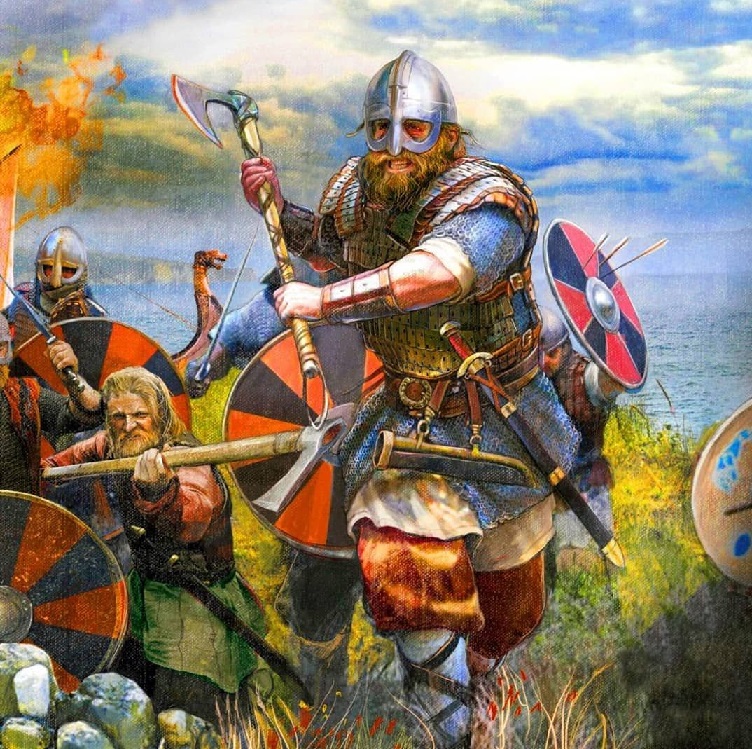Chapter I
CHAPTER I
OF THE SITUATION OF BRITAIN AND IRELAND AT THE OUTSET OF THE BRITONNIC RENAISSANCE

The distinct nations inhabiting the British Isles during the IX century AD
OF THE SITUATION OF BRITAIN AND IRELAND AT THE OUTSET OF THE BRITONNIC RENAISSANCE

The distinct nations inhabiting the British Isles during the IX century AD
These isles at present, following innumerable invasions and countless migrations, contain six nations, the Cumbri, English, Welsh (and the Cornish, being but a sub-group within the larger Welsh nation), Scots, Irish, and Norse, each in its own peculiar dialect cultivating the sublime study of Divine truth. This however was not always the case, with many other groups being lost to time, and others assimilated into a greater whole.
It was the Britons who first were masters of this land, inhabiting its fertile fields, mountainous passes, and luscious forests, from the Saxon Shore in the South, to the Orkney Islands in the North. This would all change as the Roman legions set out to conquer Britain in 43 AD, under orders of Emperor Claudius. It was here that the Latin invaders faced their greatest challenge yet, warring for nearly five decades against the brave peoples of Britain before finally subduing them into accepting rule from Rome. By the time of the Roman withdrawal from Britain in the 5th century, the native Britons had been pacified and disarmed by their Mediterranean overlords, with only a few pockets of resistance hanging on North of Hadrian’s and the Antonine walls, as the Picts proved to be a resilient thorn on the Roman which remained unconquered. The once ferocious Britons had been thoroughly Romanized, as well as become illuminated by the light of God and the warmth embrace of Christ. The once powerful warrior culture of the pre-Roman Britons had all but disappeared. This would prove disastrous as the withdrawal of the Legions gave the Irish (specifically the tribe of the Scottii), the Picts, and the Saxons much leeway to raid and pillage the land at their leisure, with little retaliation from the native Romano-Britons.

The Romano-Britons
It would be these Scotti and Picts that would eventually merge to form what we have come to known as the Scottish nation, or Albannaich in their native tongue, inhabiting the Northern reaches of Britain. The Saxons would not only raid defenseless Britain alongside the Picts and Scotti, but over time would come to serve as mercenaries for the upstart Brittonic Kingdoms that would occupy the vacuum left by the Roman retreat, fighting against the Scotti and Picts, and occasionally, against the Britons who hired their services. Over time more Saxons would follow their mercenary brethren, mostly farmers and refugees, settling on the Eastern coasts of Britain. They would in time be joined by other opportunistic Germanic peoples, like the Jutes and the Angles. These three Germanic peoples would eventually become the English nation, or Angelcynn in their native tongue.

The Pictish/Scottish peoples

The Irish peoples
These English invaders would establish a myriad of kingdoms, displacing and subjugating the native Britons who had inhabited the land for millennia. As these invaders conquered kingdom after kingdom, the Briton nation would eventually be broken up as the English conquered their way to the Irish Sea, with the Western Britons surviving in the hilly areas of what we’ve come to know as Wales (with a few in Cornwall as well), and the Northern Britons, prevailing in the lustrous Kingdom of Ystrad Clud. Being isolated from each other, these two groups would eventually develop different identities and cultures, eventually becoming the Welsh and Cumbric nations.

The Anglo-Saxons
The last of the nations to arrive in our glorious land were the barbarous Norse, travelling from the Northern coasts of Scandinavia to pillage and raid the lands of Britain and Ireland, especially inflicting divine punishment unto the upstart English, razing their towns and brutalizing their people. It was these Norse “Vikings” that indirectly enabled the resurgence of the Briton nation, as the wise and powerful Kings of the Cumbri thrived in the chaos brought about by God to the heathenish English, in order to reclaim what was rightfully theirs.

The Norsemen
Last edited:
- 3
- 1
















